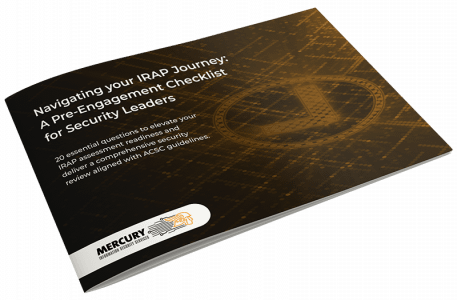Checklist
Preparing for an IRAP assessment is complex, given the myriad of controls and protocols involved. Mercury’s Pre-Engagement Checklist helps simplify this process by outlining key questions aligned with ACSC’s framework. These questions assist in preparing for an assessment and provide a snapshot of your current cybersecurity posture. Mercury offers the necessary expertise and guidance to help you approach your IRAP assessment with well-founded confidence.
The checklist is an effective planning tool, identifying any gaps or areas needing additional attention. It is a structured method to ensure that your cybersecurity measures are both effective and in line with industry best practices.
Mercury offers the necessary expertise and guidance at every step to help you approach your IRAP assessment with confidence.

Thank you for downloading our IRAP Pre-Engagement Checklist.
Mercury’s checklist adheres to the ACSC IRAP framework, ensuring alignment with cybersecurity best practices, regulations, and standards for comprehensive security readiness.
Initial planning and stakeholder engagement. Focuses on
governance,cyber strategy, and threat environment.
Determines assessment boundaries, including systems, locations, and data. Defines the target of evaluation.
Evaluates design and operational effectiveness of security controls through evidence and observations.
Finalises with a report documenting findings and clarifying the risk profile of the scoped environment.